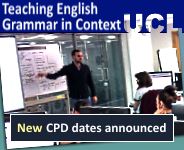National Curriculum KS1 Y2
By the beginning of year 2, pupils should be able to read all common graphemes. They should be able to read unfamiliar words containing these graphemes, accurately and without undue hesitation, by sounding them out in books that are matched closely to each pupil’s level of word reading knowledge. They should also be able to read many common words containing GPCs taught so far [for example, shout, hand, stop, or dream], without needing to blend the sounds out loud first. Pupils’ reading of common exception words [for example, you, could, many, or people], should be secure. Pupils will increase their fluency by being able to read these words easily and automatically. Finally, pupils should be able to retell some familiar stories that have been read to and discussed with them or that they have acted out during year 1.
During year 2, teachers should continue to focus on establishing pupils’ accurate and speedy word reading skills. They should also make sure that pupils listen to and discuss a wide range of stories, poems, plays and information books; this should include whole books. The sooner that pupils can read well and do so frequently, the sooner they will be able to increase their vocabulary, comprehension and their knowledge across the wider curriculum.
In writing, pupils at the beginning of year 2 should be able to compose individual sentences orally and then write them down. They should be able to spell correctly many of the words covered in year 1 (see English Appendix 1 [below]). They should also be able to make phonically plausible attempts to spell words they have not yet learnt. Finally, they should be able to form individual letters correctly, so establishing good handwriting habits from the beginning.
It is important to recognise that pupils begin to meet extra challenges in terms of spelling during year 2. Increasingly, they should learn that there is not always an obvious connection between the way a word is said and the way it is spelt. Variations include different ways of spelling the same sound, the use of so-called silent letters and groups of letters in some words and, sometimes, spelling that has become separated from the way that words are now pronounced, such as the ‘le’ ending in table. Pupils’ motor skills also need to be sufficiently advanced for them to write down ideas that they may be able to compose orally. In addition, writing is intrinsically harder than reading: pupils are likely to be able to read and understand more complex writing (in terms of its vocabulary and structure) than they are capable of producing themselves.
For pupils who do not have the phonic knowledge and skills they need for year 2, teachers should use the year 1 programmes of study for word reading and spelling so that pupils’ word reading skills catch up. However, teachers should use the year 2 programme of study for comprehension so that these pupils hear and talk about new books, poems, other writing, and vocabulary with the rest of the class.
Welcome!

Englicious is totally free for everyone to use!
But in exchange, we ask that you register for an account on our site.
If you’ve already registered, you can log in straight away.
Since this is your first visit today, you can see this page by clicking the button below.
- Printer-friendly version
- Log in to view or leave comments

